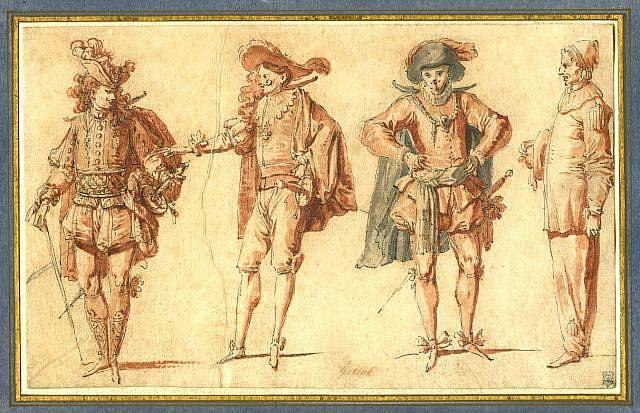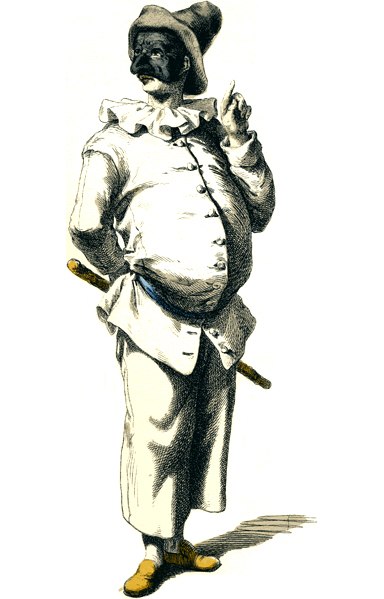The Pantomime Theatre is an open-air theatre located in the Tivoli Gardens in Copenhagen, Denmark. As indicated by the name, it is primarily used for pantomime theatre in the classical Italian commedia dell'arte tradition which is performed daily. Besides this original function, the theatre leads a second life as a venue for ballet and modern dance.
The Pantomime Theatre with its Peacock Curtain
The first Pantomime Theatre
The stage with the Peacock Curtain
Harlekin and Columbine at The Pantomime Theatre
Commedia dell'arte was an early form of professional theatre, originating from Italian theatre, that was popular throughout Europe between the 16th and 18th centuries. It was formerly called Italian comedy in English and is also known as commedia alla maschera, commedia improvviso, and commedia dell'arte all'improvviso. Characterized by masked "types", commedia was responsible for the rise of actresses such as Isabella Andreini and improvised performances based on sketches or scenarios. A commedia, such as The Tooth Puller, is both scripted and improvised. Characters' entrances and exits are scripted. A special characteristic of commedia is the lazzo, a joke or "something foolish or witty", usually well known to the performers and to some extent a scripted routine. Another characteristic of commedia is pantomime, which is mostly used by the character Arlecchino, now better known as Harlequin.
A commedia dell'arte street play during the Carnival of Venice
Commedia dell'arte Troupe on a Wagon in a Town Square by Jan Miel (1640)
Claude Gillot (1673–1722), Four Commedia dell'arte Figures: Three Gentlemen and Pierrot, c. 1715
Pulcinella, drawn by Maurice Sand








